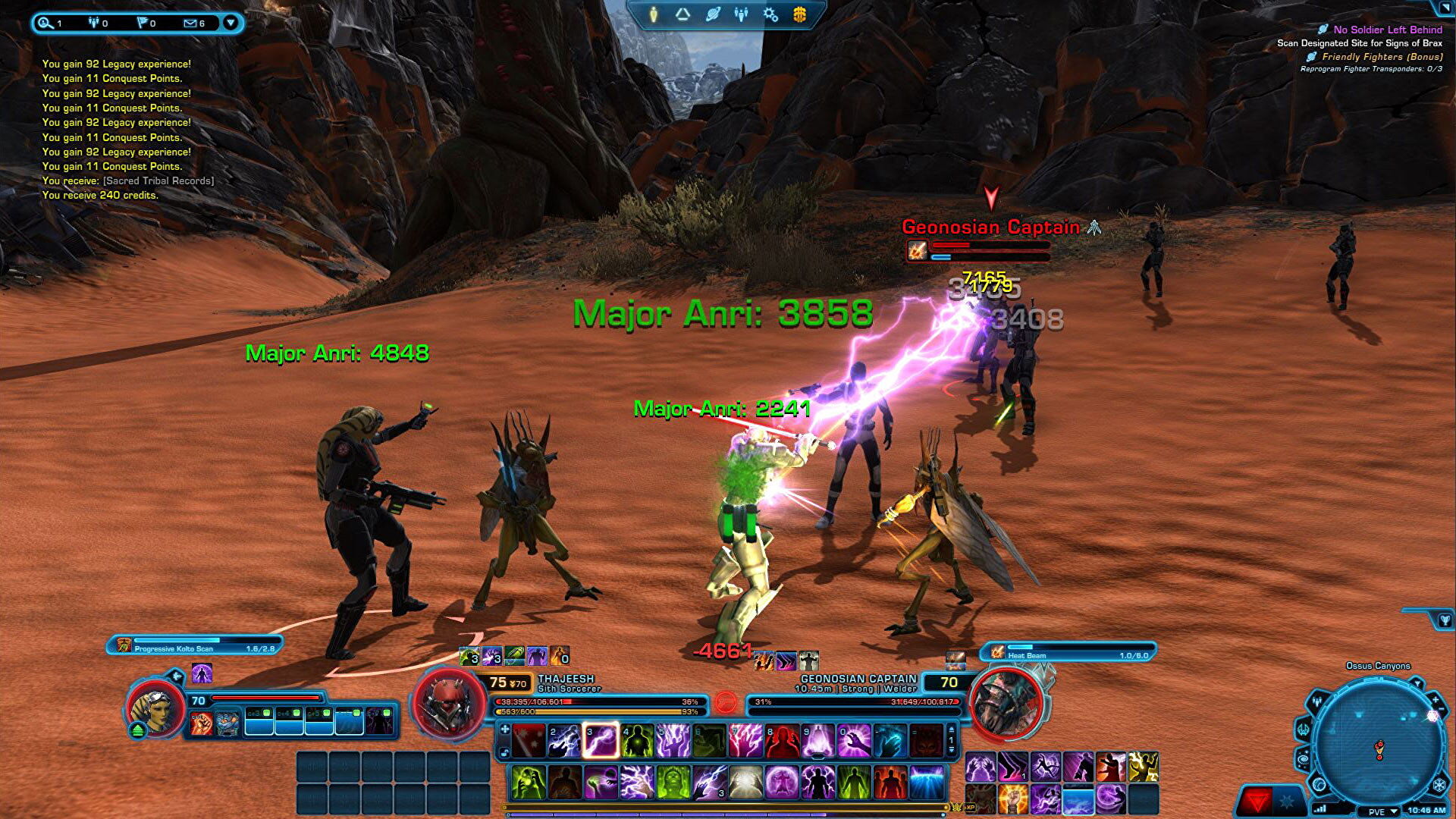Massively multiplayer online games (MMORPGs) are popular video games in which hundreds or thousands of players interact in an open world. Some of these games are similar to each other while others have specific differences. In this article, you’ll learn about the basics of MMORPGs and what they offer.
MMORPGs are massively multiplayer online role-playing games
MMORPGs (massively multiplayer online role-playing games) are internet-based games in which hundreds or even thousands of players interact in a fictional story. These games have several negative effects, including the fact that they can cause addictive behavior. However, there are some positive aspects of MMORPGs, too.
MMORPGs often feature strong social interaction and in-game culture. In addition, many MMORPGs offer character customization. These characters can be very unique and can specialize in different fields. Depending on the game, these specialties can be related to an affinity, race, or job.
MMORPGs are also available in free-to-play and pay-to-play versions. These free-to-play versions of the games usually offer reduced content and some features, while paid versions feature more comprehensive features. These games often also offer advertising options to boost revenue.
MMORPGs have a long history. Some of the first massively multi-player games were developed in the mid to late-90s. The genre had many incarnations, including first-person shooters such as PlanetSide. Later, sprite-based graphics were introduced. Popular games such as Meridian 59, The Realm, and Ultima Online helped keep the genre alive. However, the explosion of social media has led to a new wave of free-to-play MMORPGs.
MMORPGs are massively multiplayer games that involve hundreds or even millions of players. Because the worlds of these games are persistent, players can log in at any time and see their progress. Moreover, events and characters may change when you log out.
Some MMORPGs are free-to-play and run on a client-server system. The generating software runs continuously on the server, while the player connects to the game using client software. In some cases, the client software allows players to access the entire playing world; others limit the number of players to a few thousand.
They have PvP
MMO games usually feature PvP as an integral part of the game, and you can choose whether or not you want to take part in it. Some games offer PvE modes where you can play cooperatively against the AI, and others allow you to engage in aggressive PvP. Some players prefer to play on a PvE server, while others enjoy the more competitive PvP environment. If you decide to take part in PvP, you should know that switching servers can be expensive and difficult.
In PvE games, most of your opponents are computer-controlled, while PvP games are played against other players. While PvE games are more intense, they don’t usually encourage trolling or other types of misconduct. In addition to PvP and PvE game modes, online games sometimes feature events, which pit multiple groups of players against each other. PvP events usually involve attacking boss monsters, while PvE events feature cooperative goals.
Some of the most popular MMOs have PvP modes. For example, Black Desert Online has large Node Wars where guilds fight to control nodes around the world. Once a guild gains control of a node, it can collect taxes. Another popular game with PvP is Crowfall, which is described as a “Throne War” style PvP game. Campaigns in this game don’t last forever, but they still feature some interesting gameplay. While battling is an important part of MMO games, it’s important to remember that it requires you to farm resources and build guild halls and castles.
They have sharded universes
Many MMO games use sharded universes to help solve the problem of server load. These systems make it easier for players to visit all areas of the game, while also allowing more players to join at the same time. This method is particularly useful in games with large game worlds and a large number of players.
The problem of coordinating placement into shards increases as the game’s player base grows. The trade-off is scale, but sacrifices player interaction. A large number of players can easily sabotage a game’s experience. Another drawback of sharding is that it makes it difficult to coordinate placement between players from different worlds.
They have turn-based strategy
If you’re a fan of online strategy games, you’ve probably noticed that turn-based strategy is a key component of many of these games. These types of games are similar to traditional board games but are far more complex. The addition of a computer allows players to take control of a character’s actions and develop strategies for defeating other players. Some examples of turn-based strategy games include Sid Meier’s Civilization series, Heroes of Might and Magic, Panzer General, Age of Wonders, and Warlords.
The turn-based strategy genre focuses on strategic gameplay, which involves understanding the situation on the battlefield, predicting enemy moves, and changing tactics as needed. Most turn-based games are automated, with each action completed by clicking a button. In order to increase your skills, you must constantly practice.
Another example of turn-based strategy games is Hearthstone, which incorporates both real-time and turn-based strategies. This type of strategy game allows players to take their time and make strategic decisions. Unlike real-time games, players in turn-based games have limited time to make decisions, which allows them to maximize their strategy and succeed.
A number of turn-based strategy games are available for free online, and they can keep you entertained for hours. Turn-based strategy games are a great way to spend an afternoon. Some of them can even be played in your web browser, so you don’t have to download anything.
They have a monthly subscription fee
Modern MMO games often come with a monthly subscription fee. While this fee is minimal compared to what most players spend on a monthly basis, some people don’t want to pay a monthly fee for something they may not use often. For these people, the option of paying a one-time fee may be more convenient. It also helps them save money.
Subscription fees are another form of income for game developers. Most MMOs charge a subscription fee, but not all. Some games sell power in individual stores, and others have no monthly fee. These games typically have a much lower profit margin than other genres of games.
Subscriptions are a great way to monetize MMO games. They can provide a predictable revenue stream and increase player engagement and retention. Subscribers are also more likely to spend money on in-game purchases such as cosmetics and battle passes. Subscription gamers may even receive access to more levels or worlds. Subscription gamers can also get better skills, more quests, and loot crates.
Subscription fees for MMO games are most common in the World of Warcraft franchise. However, the monthly subscription fee for these games can be significant and leave a large dent in the wallet. Alternatives to pay-to-play subscription fees include free-to-play MMOs or one-time purchases. Additionally, some MMO games are free to play with special perks.

